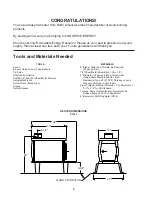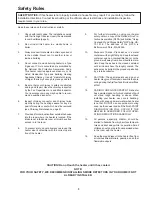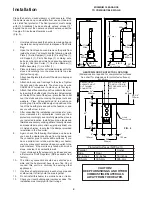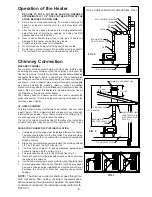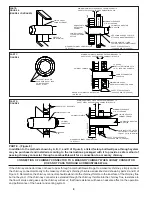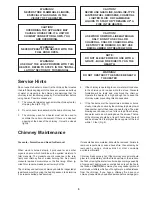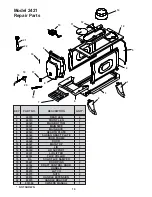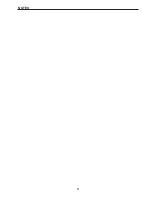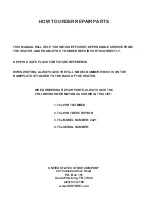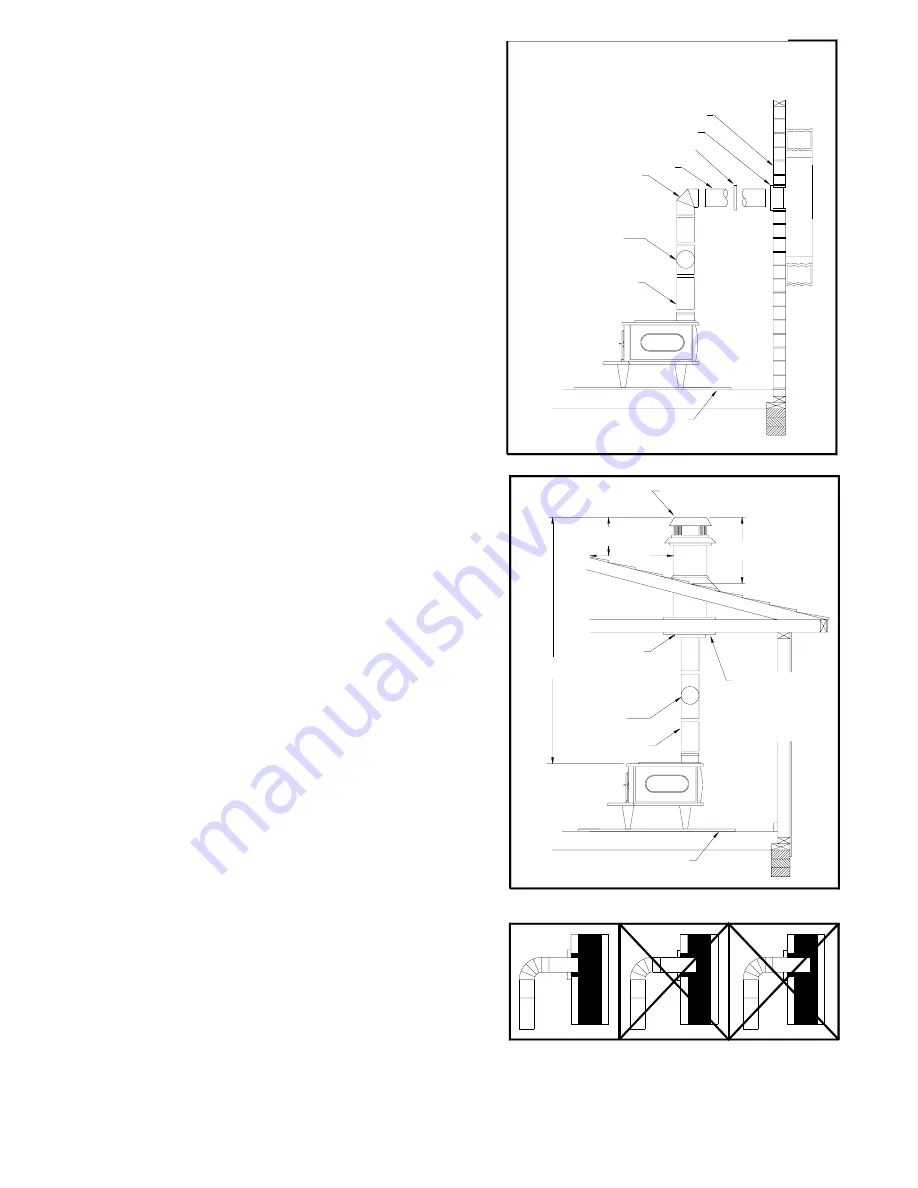
5
Operation of the Heater
BE SURE TO PUT A LAYER OF SAND OR FIREBRICK
APPROXIMATELY 1 1/2" THICK IN THE BOTTOM OF THE
STOVE BEFORE STARTING FIRE.
Burn wood or wood products only. The wood should be air
dried for at least six months prior to use for maximum effi-
ciency.
After the fire has been started and is burning satisfactorily,
adjust the rate of burning by opening or closing the draft
damper wheel on the feed door.
Never build extremely large fires in this type of heater as
damage to the heater or smoking may result.
Provide air into the room for combustion.
Do Not touch the heater after firing until it has cooled.
Do Not use a grate or elevate fire, build fire directly on hearth.
The fuel feed door must remain closed during operation.
1.
2.
3.
4.
5.
6.
7.
8.
FIG. 7
FIG. 5
FIG. 6
WRONG
WRONG
RIGHT
FLOOR REGULATOR
PIPE
ELBOW
BAROMETRIC
DRAFT REGULATOR
PIPE
COLLAR
THIMBLE
NON-COMBUSTIBLE WALL
FLUE CONNECTION-NON-COMBUSTIBLE WALL
CHIMNEY CAP MANDATORY
3 FT. MIN.
FLOOR PROTECTOR
BAROMETRIC
DRAFT REGULATOR
PIPE
11 FT. MINIMUM
PIPE REDUCER
10 FT.
2 FT. MIN.
NON-COMBUSTIBLE
CONSTRUCTON IN
ACCORDANCE WITH
NFPA 211
Crimped end of the pipe must be installed toward the heater.
The pipe should slide into the flue collar. The pipe should be
firmly attached to the flue collar with 3 screws and sealed with
furnace cement.
Slope any horizontal pipe upward toward the chimney at least
1/4 " inch for each foot of horizontal run.
You must have at least 18" inches clearance between any
horizontal piping and the ceiling. (Fig. 4)
The pipe cannot extend into the chimney flue.(Fig. 8)
Seal each connector pipe joint with furnace cement. Also seal
the pipe at the chimney.
Use 3 sheet metal screws at each joint to make the piping rigid.
It is recommended that no more than two (2) 90 degree bends
be used in the stove pipe installation as more than two (2) may
decrease the amount of draw and possibly cause smoke
spillage.
1.
2.
3.
4.
5.
6.
7.
NOTE: The chimney connector shall not pass through an
attic, roof space, floor, ceiling, or similar concealed space.
Where passage through a wall or partition of combustible
construction is desired, the installation must conform with
NFPA 211.
Chimney Connection
MASONRY CHIMNEY
The masonry chimney must comply with UL codes. Before using
an existing masonry chimney, clean the chimney and inspect the
flue liner to be sure it is safe to use. Make repairs before attaching
the heater. See Page 3, Item 5. Look at Fig. 6. The connector pipe
and fittings you will need to connect directly to a masonry chimney
are shown. If the connector pipe must go through a combustible
wall before entering the masonry chimney, consult a qualified
masonor chimney dealer. The installation must conform to local fire
codes. Do not connect this heater into the same chimney flue as
the fireplace or flue from another heater.
The chimney used for a heater must not be used to ventilate the
cellar or basement. If there is a cleanout opening at the base of the
chimney, close it tightly.
UL LISTED CHIMNEY
Carefully follow chimney manufacturer's instructions. Use only listed
type HT per UL 103, 6-in diameter black or blued chimney connector,
minimum 24 gauge steel. If your chimney starts at the ceiling (Fig. 7),
you will need enough 6" pipe to reach the ceiling.
The top of the chimney must be at least 3 feet above the roof and be
at least 2 feet higher than any point of the roof within 10 feet. (Fig 6)
RULES FOR CONNECTOR PIPE INSTALLATION
Summary of Contents for LOGWOOD 2421
Page 11: ...NOTES 11 ...


